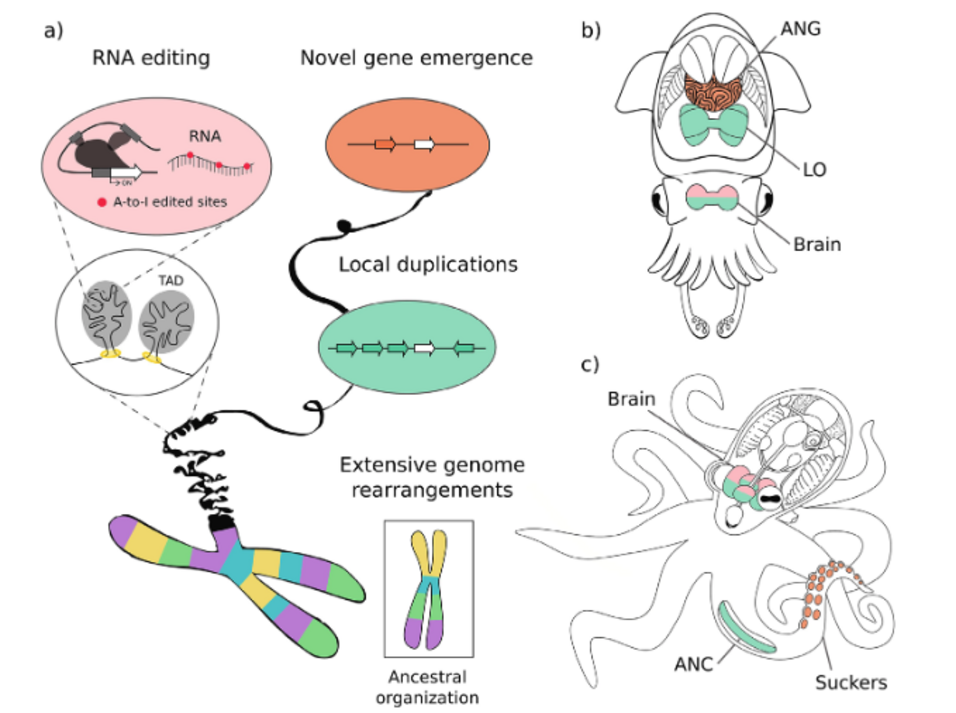How genomic innovation translates into organismal organization remains largely unanswered. Possessing the largest invertebrate nervous system, in conjunction with many species‐specific organs, coleoid cephalopods (octopuses, squids, cuttlefishes) provide exciting model systems to investigate how organismal novelties evolve. However, dissecting these processes requires novel approaches that enable deeper interrogation of genome evolution. Here, the existence of specific sets of genomic co‐evolutionary signatures between expanded gene families, genome reorganization, and novel genes is posited. It is reasoned that their co‐evolution has contributed to the complex organization of cephalopod nervous systems and the emergence of ecologically unique organs. In the course of reviewing this field, how the first cephalopod genomic studies have begun to shed light on the molecular underpinnings of morphological novelty is illustrated and their impact on directing future research is described. It is argued that the application and evolutionary profiling of evolutionary signatures from these studies will help identify and dissect the organismal principles of cephalopod innovations. By providing specific examples, the implications of this approach both within and beyond cephalopod biology are discussed.

